Boost Converter: Working Principle, Design and Functions
2024-05-07
6885
In the landscape of electronic design, the boost converter emerges as a critical component, especially renowned for its ability to efficiently elevate a low input voltage to a higher output voltage. This capability renders it indispensable across a spectrum of applications ranging from managing power supplies to facilitating efficient battery charging and driving LEDs. The underlying principle of the boost converter involves an intricate dance of energy storage and switch-controlled power conversion, utilizing components like inductors and MOSFETs to manipulate voltage levels dynamically. This article delves into the operational foundations and intricate design strategies of boost converters. It explores essential aspects such as the selection of oscillator frequency, precise calculations of inductance and capacitance, and advanced methods to optimize circuit performance for robust energy conversion. We will address critical considerations in layout and component selection tailored to specific applications, alongside strategies to surmount common design challenges such as enhancing conversion efficiency, mitigating output voltage fluctuations, and improving thermal management.
Catalog

Figure 1: Boost Converter Circuit
What is a Boost Converter?
A boost converter is an electronic device that steps up a low input voltage to a higher output voltage. It's a specific type of DC-DC converter widely used in applications such as power supply management, battery charging, and LED operation.
The operation of a boost converter involves inductive energy storage combined with switch-controlled power conversion. Essentially, when the input voltage is insufficient for the application's needs, the boost converter elevates it to the required level. This process begins when the internal MOSFET (a type of switch) is activated, allowing the voltage to be temporarily stored in an inductor. As the MOSFET turns off, the stored energy in the inductor is released, boosting the voltage as it's delivered to the output through a diode which prevents backflow.
The sequence of turning the MOSFET on and off creates a cycle where the inductor alternately charges and discharges, effectively increasing the voltage each time. The frequency and duration of these cycles, known as the duty cycle, are important as they determine how much the voltage is increased. A feedback mechanism is employed to adjust this duty cycle, ensuring the output voltage remains stable regardless of variations in load or input voltage. An output capacitor is used to smooth out any fluctuations in the output voltage, providing a steady voltage supply to the load.
The basic components of a boost converter include the input power source, the MOSFET, an inductor, a diode, an output capacitor, and the load itself. During operation, if the input voltage is below the desired output, the MOSFET is switched on, causing the inductor's current to build up. Upon switching the MOSFET off, the current seeks a path to continue flowing due to the inductor's self-inductance, generating a reverse potential. This forces the current through the diode into the output capacitor and the load, thereby increasing the output voltage.
Boost Converter Design
Designing a boost converter involves detailed calculations and a deep understanding of electronic components and their interactions. This process is crucial for achieving an efficient and stable boost converter system. Here’s a step-by-step breakdown:
Analyzing Load Demand
Begin by determining the load's maximum required output voltage (Vout) and current (Iout). These values are used to calculate the required output power  . This initial step sets the performance targets for the boost converter and informs the selection of components and their specifications.
. This initial step sets the performance targets for the boost converter and informs the selection of components and their specifications.
 . This initial step sets the performance targets for the boost converter and informs the selection of components and their specifications.
. This initial step sets the performance targets for the boost converter and informs the selection of components and their specifications.Calculating and Adjusting Input Current
With the output power known, calculate the average input current needed by dividing the output power by the input voltage  . Since real-world applications involve efficiency losses and current ripple, increase this value by at least 40% to find the peak input current
. Since real-world applications involve efficiency losses and current ripple, increase this value by at least 40% to find the peak input current  . Also, establish a minimum input current at 80% of the average
. Also, establish a minimum input current at 80% of the average  to account for fluctuations in current demand.
to account for fluctuations in current demand.
 . Since real-world applications involve efficiency losses and current ripple, increase this value by at least 40% to find the peak input current
. Since real-world applications involve efficiency losses and current ripple, increase this value by at least 40% to find the peak input current  . Also, establish a minimum input current at 80% of the average
. Also, establish a minimum input current at 80% of the average  to account for fluctuations in current demand.
to account for fluctuations in current demand.Determining the Duty Cycle
The duty cycle (D) is critical for managing the converter’s efficiency and the stability of the output voltage. It can be initially estimated from the formula  . Adjustments may be necessary based on the specific characteristics of the components and circuit to ensure optimal performance under actual operating conditions.
. Adjustments may be necessary based on the specific characteristics of the components and circuit to ensure optimal performance under actual operating conditions.
 . Adjustments may be necessary based on the specific characteristics of the components and circuit to ensure optimal performance under actual operating conditions.
. Adjustments may be necessary based on the specific characteristics of the components and circuit to ensure optimal performance under actual operating conditions.Selecting Oscillator Frequency
The choice of oscillator frequency significantly influences the converter’s efficiency, output ripple, and response speed. There’s a balance to be struck between conversion efficiency and the physical size of components like inductors and capacitors. Once the frequency is set, calculate the total cycle time  , and from there, determine the MOSFET on time
, and from there, determine the MOSFET on time  .
.
 , and from there, determine the MOSFET on time
, and from there, determine the MOSFET on time  .
.Calculating Inductance Value
Inductance (L) is the relevant value for storing energy and smoothing the output current. Use the formula  to compute the theoretical inductance needed, where ΔI represents the range of input current fluctuation. In practice, select a standard inductor value close to this calculated figure and perform empirical testing to fine-tune the performance.
to compute the theoretical inductance needed, where ΔI represents the range of input current fluctuation. In practice, select a standard inductor value close to this calculated figure and perform empirical testing to fine-tune the performance.
 to compute the theoretical inductance needed, where ΔI represents the range of input current fluctuation. In practice, select a standard inductor value close to this calculated figure and perform empirical testing to fine-tune the performance.
to compute the theoretical inductance needed, where ΔI represents the range of input current fluctuation. In practice, select a standard inductor value close to this calculated figure and perform empirical testing to fine-tune the performance.These detailed steps in the design of a boost converter not only allow for a more precise setup but also provide insights into addressing potential challenges during the design phase. By carefully considering each aspect, from load demands and input current adjustments to the meticulous setting of the duty cycle, oscillator frequency, and inductance values, one can craft an effective and reliable boost conversion system.
Boost Converter Components and Their Functions
Operating a boost converter effectively requires understanding its components, especially the oscillator and the MOSFET. The oscillator is important for generating control signals that regulate the opening and closing of the MOSFET, which in turn controls the charging and discharging of the inductor. This interaction directly impacts the efficiency of the converter and the stability of the output voltage.

Figure 2: Oscillator Feedback Loop Showing Conditions for Oscillation
Understanding Inductor Limits
Inductors are not ideal, they have a saturation current limit, which is the maximum current they can handle without their magnetic cores reaching saturation. If this limit is exceeded, the inductor’s ability to store energy effectively decreases, reducing conversion efficiency and potentially damaging the inductor and the MOSFET through prolonged overcurrent.
Oscillator Configuration
The oscillator's frequency and pulse width are the key. They need to be set so that the MOSFET doesn’t stay on too long, preventing overcurrent and saturation of the inductor. This requires precise calculations to determine how quickly the inductor reaches a critical current level (like 1 amp) at a given input voltage, allowing for adjustments in the oscillator's output to manage energy flow efficiently.

Figure 3: Oscillation Signal
MOSFET Set Requirements
The MOSFET, serving as a switch, needs to handle not only the input DC voltage but also the additional voltage generated by the inductor when energy is released. The MOSFET's breakdown voltage should significantly exceed the sum of the maximum input voltage and the highest possible voltage produced by the inductor to prevent electrical failure under extreme conditions. Considering the on-resistance (RDS(ON)) of the MOSFET, a lower on-resistance means less power consumption in the on state, enhancing overall efficiency. However, high-voltage MOSFETs typically have higher on-resistance, which might require a compromise between efficiency and safety margin. High-speed switching in MOSFETs reduces energy loss but can introduce more noise, which needs careful consideration in the design phase.

Figure 4: Boost Converter with MOSFET in Yellow Circle
Inductor Selection and Optimization
Choosing the right inductor involves several parameters: inductance value, saturation current, direct current resistance (DCR), and core material. Each parameter influences the converter's performance.
Inductance Value: Higher values smooth out the output current but increase size and potential core losses. The value should align with the operating frequency and expected ripple current.
Saturation Current: The inductor's saturation current must exceed the peak current under maximum load to prevent saturation, ensuring stable inductance across all operating conditions.
DCR: A lower DCR reduces power loss within the inductor, boosting efficiency. However, achieving a lower DCR may involve using thicker wires or premium materials, increasing the size and cost of the inductor.
Core Material: Selecting a core material with high permeability improves inductance and saturation characteristics but may lead to higher losses at high frequencies. This choice requires balancing between performance, size, cost, and specific application needs.

Figure 5: Inductor
Understanding these components and their interactions within a boost converter is essential for designing an efficient and reliable system. Proper selection and configuration of the oscillator, MOSFET, and inductor not only improve the system's performance but also enhance its operational stability and efficiency.

Figure 6: Circuit Diagram of Inductor
Working Principle of Boost Converter
A boost converter increases low input voltage to a higher output voltage using a series of controlled steps. Here's a detailed breakdown of how it functions:
At the heart of a boost converter is an N-channel MOSFET, which is controlled by a PWM (Pulse Width Modulation) signal. When the MOSFET (acting as a switch) is turned on, it allows current to flow through an inductor in the circuit. Due to the properties of the inductor, the current does not increase instantaneously but rather builds up gradually. During this time, energy is stored within the magnetic field of the inductor.

Figure 7: N-Channel MOSFET
In this specific setup, when the MOSFET is on, it is considered to have zero resistance. At this stage, the inductor behaves like a short circuit to DC, which means it allows as much current to pass through as the power source can provide. As a result, the current through the inductor continues to increase.

Figure 8: The Current Gradually Increases
When the MOSFET is switched off, the circuit pathway changes, causing the current to flow through a larger circuit loop that includes the load. If the load, for instance, draws a significant current at 5V, the inductor responds by increasing the voltage. This happens because the inductor releases the stored energy to meet the demand of the load, resulting in a surge of voltage.

Figure 9: The Current of the Inductor Can be Maximized as the Source Can Provide, and the Current will Increase Infinitely
To manage these voltage spikes and provide a continuous output, a capacitor is placed parallel to the load. This capacitor stores the energy during these spikes and releases it smoothly over time, stabilizing the output voltage.

Figure 10: Current Flowing through A Larger Loop
A peculiar situation arises due to the switching nature of the MOSFET and the behavior of the inductor and capacitor. When the MOSFET is on, the inductor charges up, and when it's off, the inductor discharges but also charges the capacitor. If the switch is turned back on immediately, the inductor begins to charge again, but now the capacitor, being charged, does not allow much current to flow through the load. To resolve this, a diode is added between the inductor and the capacitor. This diode ensures that the current only flows in one direction—out of the capacitor when the MOSFET is off. This setup allows the converter to maintain a steady current and voltage output at the load.

Figure 11: Placing Capacitors in the Circuit
Through these steps, a boost converter efficiently manages to step up the input voltage to a higher level, ensuring that devices receive the necessary voltage for their operation. This controlled sequence of charging and discharging, regulated by the MOSFET and smoothed by the capacitor, is fundamental to the effective functioning of a boost converter.

Figure 12: Placing Diode between Capacitor and Inductor
Part Selection
In the design process of a boost converter, each component's selection is vital to achieving optimal performance and efficiency. Here, we delve into the details of choosing the right switching transistors and diodes, breaking down the technical considerations into simpler, practical guidance.
Selection and Analysis of Switching Transistors
When selecting a MOSFET, there are critical aspects to consider:
Breakdown Voltage (Vds): Ensure the MOSFET's breakdown voltage exceeds the boost converter's maximum expected output voltage by at least 50%. This buffer protects the MOSFET from extreme conditions and prevents damage, enhancing the system's reliability.
On-resistance (Rds(on)): The on-resistance significantly influences power efficiency. Lower Rds(on) decreases power loss when the MOSFET is active, thus improving efficiency and minimizing heat. For instance, the IRF3205 MOSFET, with its low 8 milliohm resistance, boosts system efficiency while managing heat effectively.
Input Capacitance (Ciss)/Gate Capacitance: A MOSFET with a lower input capacitance switches faster and consumes less power in driving circuits, which benefits the system's response speed and energy efficiency. The IRF3205, with its 3247pF input capacitance, exemplifies an ideal choice for responsive and energy-efficient designs.
To enhance MOSFET performance, integrating a dedicated gate driver is important. A robust gate driver like the TC4427, which offers dual independent drive channels capable of delivering up to 1.5A each, facilitates rapid charging and discharging of the MOSFET gate. This capability allows the MOSFET to switch swiftly and consistently, minimizing conversion losses and boosting overall efficiency. The compact TC4427, with its dual channels that can be paralleled for higher current needs, simplifies circuit layout while enhancing drive performance and system reliability.

Figure 13: TC4427 Gate Driver
Output Diode Selection
Choosing the correct diode is equally crucial for the efficiency of high-current boost converters.
High-Speed Switching Requirements: Common diodes like the 1N4007, while robust with a high reverse voltage capability (1000V), fall short in high-speed applications due to their slow switching times. This slow response leads to significant energy losses during state transitions. Conversely, the UF4007 diode, with fast recovery times, is better suited for these environments. It matches the 1N4007's voltage capabilities but with superior performance in rapid switching scenarios, thereby enhancing circuit efficiency.
Low-Voltage Applications: For converters operating between 3.3V and 5V, Schottky diodes like the 1N5822 are preferred due to their low forward voltage drop (approximately 0.2-0.3V) and swift switching. Their efficiency in reducing power loss during operation makes them ideal for low-voltage, high-efficiency applications. Schottky diodes provide a significant advantage in minimizing switching losses compared to traditional silicon diodes, particularly in low-voltage settings.
Through thoughtful selection and pairing of switching transistors and diodes, the performance of boost converters can be significantly enhanced. This careful consideration not only optimizes energy efficiency but also extends system longevity and reduces maintenance overheads, delivering substantial benefits in final applications.
Conclusion
The design and optimization of a boost converter require a nuanced understanding of both theoretical principles and practical application challenges. From the meticulous selection of oscillator frequencies to the strategic calculation of inductor values, each step in the design process is geared towards maximizing efficiency and reliability under varying operational conditions. This article has provided a comprehensive examination of the operational dynamics and design nuances of boost converters, highlighting key components like MOSFETs, inductors, and diodes, and their critical roles in achieving desired performance outcomes. Effective implementation of these components not only enhances the converter’s functionality but also ensures the stability and longevity of the system. As technology progresses and demands for more efficient power conversion solutions rise, the insights shared here serve as a foundational guide for engineers and designers aiming to optimize boost converters for advanced electronic applications. The ongoing innovation in component technology and circuit design methodologies will undoubtedly continue to shape the future landscape of boost converter applications, pushing the boundaries of what is possible in power electronics.
Frequently Asked Questions [FAQ]
1. How much can a boost converter increase voltage?
A boost converter can increase voltage from a lower level to a significantly higher level, typically ranging from a modest increase to several times the input voltage. For example, common applications might see voltage boosts from 5V to 12V, 12V to 24V, or even from 3.3V to hundreds of volts in specialized applications, depending on the needs.
2. What is a boost converter used for?
A boost converter is used to step up DC voltage from a lower voltage level to a higher voltage level. Typical uses include powering devices that require a higher voltage than what a battery can supply, such as in portable electronic devices, electric vehicles, and systems requiring 12V or 24V from lower-voltage batteries.
3. What is the disadvantage of boost converter?
Increased Noise: Boost converters generate more electrical noise due to the switching action, which can interfere with other electronic components.
Complexity in Design: Properly designing a boost converter requires careful component selection and circuit layout to manage issues like electromagnetic interference, voltage spikes, and efficiency losses.
Risk of Voltage Spikes: Improper design or failure in the circuit can lead to high voltage spikes that might damage the electronic components connected to the output.
4. How to choose the input capacitor of a boost converter IC?
Voltage Rating: Must be higher than the maximum input voltage to prevent capacitor failure.
Capacitance Value: Sufficient to filter out the input ripple caused by the switching action and to supply the inrush current when the switch turns on.
Equivalent Series Resistance (ESR): Lower ESR helps in reducing voltage drops and improving the response to changes in load.
 ABOUT US
Customer satisfaction every time. Mutual trust and common interests.
ABOUT US
Customer satisfaction every time. Mutual trust and common interests.
function test. The highest cost-effective products and the best service is our eternal commitment.
Hot Article
- Are CR2032 and CR2016 Interchangeable
- MOSFET: Definition, Working Principle and Selection
- Relay Installation and Testing, Interpretation of Relay Wiring Diagrams
- CR2016 vs. CR2032 What’s the difference
- NPN vs. PNP: What's the Difference?
- esp32 vs stm32: which microcontroller is better for you?
- LM358 Dual Operational Amplifier Comprehensive Guide: Pinouts, Circuit Diagrams, Equivalents, Useful Examples
- CR2032 VS DL2032 VS CR2025 Comparison Guide
- Understanding the Differences ESP32 and ESP32-S3 Technical and Performance Analysis
- Detailed Analysis of RC Series Circuit
 Understanding the Types and Uses of Dynamic and Positive Displacement Pumps
Understanding the Types and Uses of Dynamic and Positive Displacement Pumps
2024-05-07
 NRF24L01 Features, Pin Configuration, Integration and Applications
NRF24L01 Features, Pin Configuration, Integration and Applications
2024-05-06
Hot Part Number
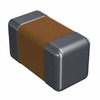 04026D225MAT2A
04026D225MAT2A EMK212ABJ475MG-T
EMK212ABJ475MG-T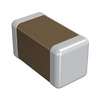 GRM1555C1H2R7BA01J
GRM1555C1H2R7BA01J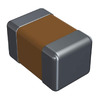 08052U360JAT2A
08052U360JAT2A LD025A560JAB2A
LD025A560JAB2A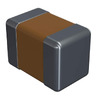 0805ZC564JAT2A
0805ZC564JAT2A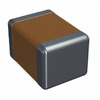 1812HC272KAT1A
1812HC272KAT1A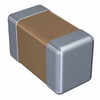 C1608X5R1C224M
C1608X5R1C224M GRM1555C1E180JZ01D
GRM1555C1E180JZ01D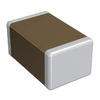 GRM2196R2A6R5DD01D
GRM2196R2A6R5DD01D
- EP3SL110F780I3N
- MKL14Z32VLK4
- ST16C450IJ44TR-F
- MIC4469ZWM
- RC0805FR-07390KL
- MC9S08DZ32ACLC
- SI3050-E-FT
- MAX98357AEWL+T
- RT1206BRD07137KL
- 6MBI100-060
- VI-254-IU-BM
- T495X477K010AHE050
- SM15T36A
- TLV271QDBVRQ1
- T491C476K006AT4832
- TPS5450DDAG4
- ADP7182ACPZ-R7
- NCV4250-2CSNT1G
- MSP430FR2633IYQWR
- REF5040AIDGKR
- TPS54160ADRCR
- UCC27423DGN
- PM8561B-F3EI
- ADUM3481BRSZ
- LTC4309CGN#TRPBF
- VNQ83013TR
- K6X0808C1D-BF70
- AD7812YRU
- CAT34C02YI-TE13
- EMC1422-1-ACZL
- IMIC9870GT
- MC95FG308D
- MN101C30AWH
- MT6223CA
- SPMF2840A
- TMS320DA150PGE160G4
- W9412G2CB-6
- VM3126PLJ
- MB86H57A